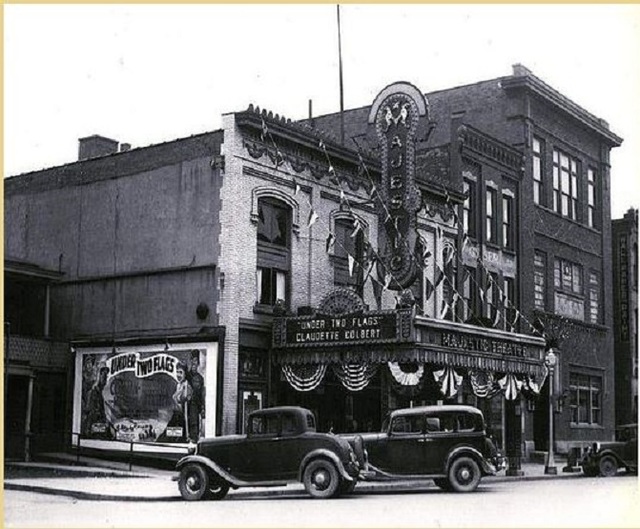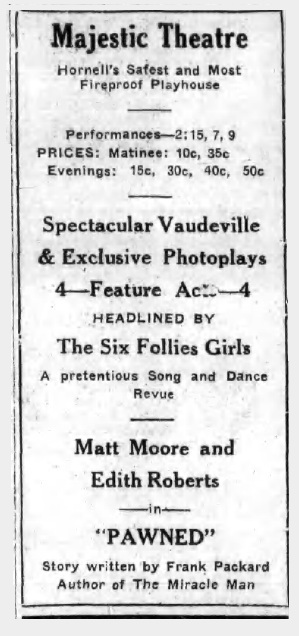Take a trip back in time in the Maple City
By: Johanna Elattar
Imagine it’s 1925. You step off the curb of Broadway in Hornell and suddenly everything smells different—coal smoke from street lamps, fresh bread from the corner bakery, and the faint scent of popcorn wafting from a nearby theater marquee. The streets are alive with the chatter of townsfolk, the clip-clop of horse-drawn carriages mingling with the occasional motorcar, and the faint strains of a piano drifting from somewhere nearby.

You’re drawn toward a glowing sign: the Majestic Theater, proudly built by the Peters family just a couple of decades ago. Across the street, the Shattuck Opera House stands in quiet elegance, a reminder that Hornell has its share of culture. But tonight, the Majestic promises a spectacle of its own: silent films, live vaudeville, and an escape from the ordinary.
As you push through the doors, the smell of freshly popped popcorn hits you first, followed by the faint scent of varnish from the polished wooden floors. The theater is dimly lit, the walls lined with red velvet curtains, and a small orchestra pit holds a lone pianist ready to provide the soundtrack to the silent movie on the flickering screen. Children clutch coins, couples whisper, and everyone waits in eager anticipation for the lights to dim completely.

The screen comes alive. You watch as the exaggerated gestures of silent film actors convey comedy, drama, or suspense without a single word. Between reels, the audience applauds, gasps, and laughs together. Occasionally, a vaudeville performer steps onto the small stage—a magician, a singer, or a comedian—and the crowd roars at each clever trick or punchline. Even from the balcony, you can feel the energy, the joy, the sense of being part of something larger than yourself, if only for a few hours.
In the early 1930s, the Majestic was part of the Warner Bros. Circuit, bringing Hollywood glamour to this small New York town. Imagine watching the newest films, experiencing stories and stars you’d only otherwise hear about in newspapers. Later, the Dipson Circuit took over, turning the theater into a second-run venue. People came for the entertainment, for the shared experience, for a night away from daily worries—whether it was the excitement of a melodrama, the laughter from slapstick comedy, or the awe of a magic act.
Time passes. The street noises fade. The theater eventually closes in the 1960s. Its doors shut, lights dim, and the building finds new lives as a factory, a warehouse, and even a church. But if you stand on that stretch of Broadway today and close your eyes, you might still hear the echoes of piano music, the murmur of an eager audience, and the flickering shadows of silent stars dancing across the screen. The Majestic may be gone, but its memory lingers—a reminder that even a small town like Hornell once held a big world of imagination, laughter, and escape behind its theater doors.
Stepping back into the present, you realize the time machine has brought you only a few steps down Broadway. Yet the past feels alive, the Marquee glows in your mind, and for a moment, Hornell isn’t so quiet after all.
___
Johanna Elattar is a New York journalist and author who has a knack for stepping into the past, uncovering hidden histories, and giving voice to the overlooked. Her work spans local reporting, investigative features, and immersive narratives that blend culture, community, and social justice. With publications in Muslim Matters, Yellow Arrow Press, Unheard Voices News, and Oxford University Press textbooks, she brings a mix of rigor, curiosity, and a touch of imagination to every story—whether she’s revisiting a long-closed theater or exploring the lives of those society tends to forget. You can contact with a story at: Americangrrl70@gmail.com






